Address: 450 Portage Avenue Map
Opened: November 18, 1926
Cost: $5 million
Architect: Barott and Blackader
Background
To cash in on what was becoming a lucrative fur trade, King Charles II granted a Royal Charter to his cousin, Prince Rupert, for the corporate entity known as the "Governor and Company of Adventurers of England trading into Hudson's Bay" or Hudson's Bay Company (HBC) on May 2, 1670. (For more on the early history of the company.)
The charter gave the HBC control of the land west of Hudson Bay and it dotted the landscape with a series of trading forts and posts. In 1826, Upper Fort Garry was established on the banks of the Assiniboine river at what is now Main Street and Assiniboine Avenue in Winnipeg.
On July 15 1870, the HBC and Dominion finalized a Deed of Surrender in which the company gave over most of its lands to the government in exchange for £300,000. The company was, however, able to keep "strategic lands" located around its forts.
In Winnipeg, this included much of what we know today as downtown Winnipeg south of Portage Avenue from Upper Fort Garry to Osborne Street.
For decades, the HBC competed with the fledgling city of Winnipeg for where the city's downtown core would be. The company laid out streets, including the grand Broadway, then sold off lots for commercial and residential development. When it came time for the company to leave the confines of the fort and build a modern store, they of course chose land from their reserves.
In 1880 - 81, the first HBC department store rose at 180 Main Street at York Avenue, (for photos of the interior). Over the decades numerous additions to the south and west of the building were made.
In time, the retail centre of Winnipeg ended up establishing itself a few blocks away on Portage Avenue. The opening of the T. Eaton department store at Portage and Donald in 1905 helped ensure that there was no going back.
By the 1920s, the HBC knew it had lot the battle and when it was looking for a new location on which to build a larger, modern-era department store, it was likely going to be on Portage Avenue. By then, of course, Portage was crammed with banking towers, office buildings and retail development.
As it turned out, the city was also looking to create a commemorative mall, now called Memorial Boulevard, that extended from Portage Avenue to the Manitoba Legislature.
The city, province and the HBC all owned vacant land in the area around the proposed mall, but none had parcel large enough to do what they wanted, so they began negotiating. At the July 31, 1925 city council meeting, a series of land swaps and zoning changes were approved that resulted in everyone getting what they needed.
Mayor Webb sent a telegram to city planner and veterans' advocate Leo Warde, the leading force behind the mall, who was in hospital at Winnipeg Beach when the meeting took place: "Congratulations to you, old boy. City council today passed bylaws covering Warde plan for Memorial Boulevard and the Hudson's Bay are going to build. Best wishes for a speedy recovery and return to the job."
Under Construction (HBC Company Archives, Archives of Manitoba)
The sod-turning ceremony for the new store took place on September 7, 1925, after which hundreds of workers started work on digging the foundations. The building materials used were almost entirely sourced from Manitoba. The steel girders were rolled in Selkirk, the stone facade quarried at Tyndall, the plaster made at Gypsumville and the two-million linear feet of timber came from Manitoba forests. Numerous local companies provided the necessary bricks and concrete
Even manufactured products were largely from local companies. The furnaces were built in Selkirk and the paints and varnishes were from factories in St. Boniface.
Nearing Completion (HBC Company Archives, Archives of Manitoba)
The pace of construction was impressive.
Fourteen months after the sod turning, the fifteen acres of floor space over six floors plus a full basement was ready for shoppers. The HBC claimed that it was a Canadian construction record for a building of that size. It was also done with no serious injuries or deaths to the hundreds of builders who had a part in its construction.
Fourteen months after the sod turning, the fifteen acres of floor space over six floors plus a full basement was ready for shoppers. The HBC claimed that it was a Canadian construction record for a building of that size. It was also done with no serious injuries or deaths to the hundreds of builders who had a part in its construction.
The store began moving equipment and stock out of the old store in early November 1926 and on Saturday, November 12th, it had its final day of business. Three days later, the new store opened and three days after that, the official opening ceremony was held.
At 9:00 a.m. on November 18, 1926, George Galt, chairman of the board of the HBC, turned a gold key in the lock of the Portage Avenue doors. Present were Mayor Webb and a host of other political and HBC dignitaries from across the country.
Once inside, the Mayor presented a bouquet of flowers to Mrs. W. H. Cook, wife of the store's general manager. Webb also recorded the store's first sale when he wandered over to a counter to purchase a green tie for his son and another to purchase a novelty bracelet for his daughter.

The Mall ca. 1928 (Virtual Heritage Winnipeg)
People turned out by the thousands to get a glimpse inside. A Free Press story noted that: "It seemed as if the whole city were outside the doors ready to swarm in and take the new store and all It represents to its heart." By lunchtime, the HBC claimed it had over 50,000 visitors.
The store's full compliment of 2,000 employees and two two paddy wagons of police officers were on-hand to ensure crowd control.
There were a number of unique features found in the store.
The "fool proof" electric elevators, for instance, were the first of their design to be used in Canada. There were originally two banks of elevators, each with a giant mural above them. (For more about the murals.) When escalator service was eventually extended beyond the second floor in 1948, one bank was removed to allow for more sales floor room.
The sub-basement was a “subterranean hive of activity” of furnaces and generators. The store also had its own fire protection system with a 100,000 gallon water reservoir. (Apparently, there was a "secret tunnel" as well!)

Winnipeg Evening Tribune, May 25 1939
For decades, the Bay was a focal point of downtown Winnipeg.
When the flight to the suburbs began after World War II, the store underwent a multi-million dollar redevelopment that saw the addition of the Paddle Wheel Buffet, a new loading bay, and a multi-level parkade to help it compete with suburban shopping malls.
It was during this 1950s renovation that the sixth floor, formerly warehouse space, was opened to the public giving the store another floor of retail space.
Another renovation took place in the late 1960s.
The changing retail landscape caught up with Portage Avenue in 1999 when its other anchor department store, Eaton's, closed.
In 2005, HBC began working with Shindico to find partners to occupy the upper four storeys of the building while the HBC would lease back the first two floors and basement for their own use. That plan did not materialize.
In March 2010, the retailer announced the start of a redevelopment of the store that would see the top three floors close and the addition of discount retailer Zellers, an HBC-owned company, in the the basement level. The Zellers store closed in 2012.
Since then, rumours have persisted that the store will close. That announcement finally came in September 2020 and it could be a long road back to reopening for the former Bay flagship.
UPDATES for 2010:
Zellers to move into Bay basement Winnipeg Free Press, Mar 20, 2010
Changes underway at The Bay CBC, Jul 8, 2010
Zellers unwraps new store in Downtown Winnipeg HBC, Nov 29, 2010
Zellers' grand opening on December 3, 2010
UPDATES for 2011:
Changes announced to The Bay restaurants, a renovation and re-branding
Paddlewheel sailing away Winnipeg Free Press, Feb. 2011
UPDATES for 2013:
Original HBC Flagship Store may Close Soon Retail Insider, Jan 10, 2013
Paddlewheel serves up its last meal CBC, Jan 24, 2013
Diamond in the Rough Winnipeg Free Press, Feb 3, 2013
UPDATES for 2020:
The Bay Downtown: Nov. 18, 1926 to Nov. 30, 2020 West End Dumplings
My other HBC-related posts and columns:
My Bay Downtown photo album on Flickr
The Bay Downtown: Nov. 18, 1926 to Nov. 30, 2020 West End Dumplings
Farewell to the Bay's Portage Avenue Flagship West End Dumplings
450 Portage Avenue Winnipeg Downtown Places
The Bay Parkade Winnipeg Downtown Places
The Paddlewheel Restaurant Winnipeg Downtown Places
Zellers' 79-year run in Winnipeg West End Dumplings
The Bay Downtown's missing elevator mural West End Dumplings
Winnipeg's missing murals in the Winnipeg Free Press
Bay's Food Market staying put West End Dumplings
The Bay Downtown's giant beacon West End Dumplings
Beacon shone from atop Bay Building in the Winnipeg Free Press
Related (History)
Our History (Winnipeg Store) HBC.com
HBC Company Archives Archives of Manitoba
A new store for an old company Archives of Manitoba
Hudson's Bay Co. Museum Collection Manitoba Museum
450 Portage Avenue U of M Winnipeg Building Index
Hudson's Bay Company In Depth CBC News
More Photos (interior shots taken with permission of store management):
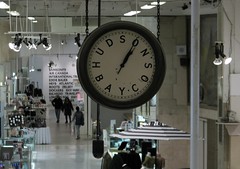
Original store clock
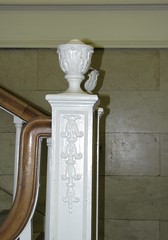
South second storey detail
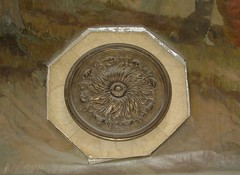
Elevator Lobby detail

Elevator lobby mural detail
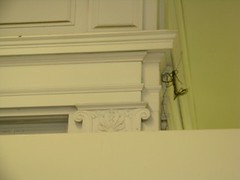
East entrance detail
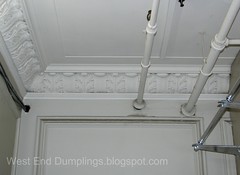
Main floor window well detail
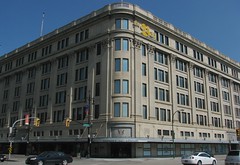
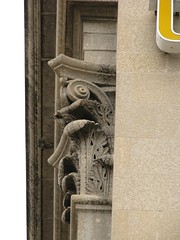
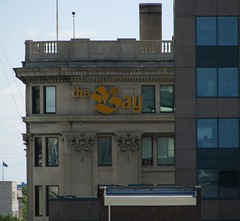
Photos of Zellers upgrade:
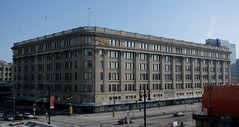





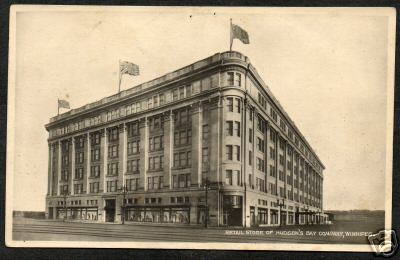

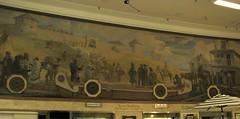
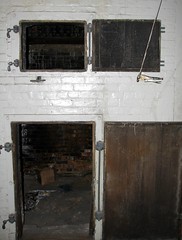

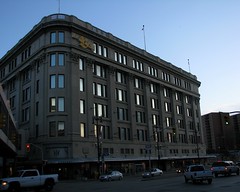

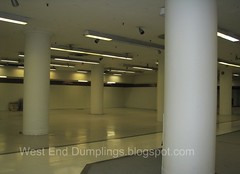
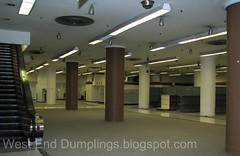
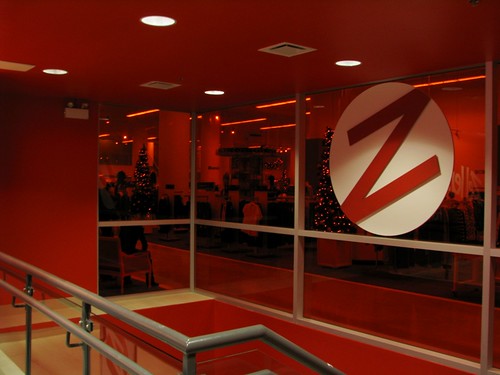

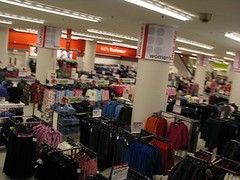
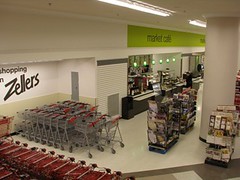
No comments:
Post a Comment